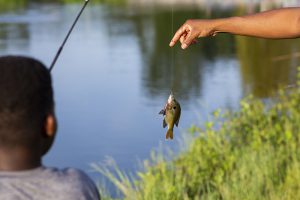A new publication, What is stock assessment?, explains how managers monitor populations of fish and make decisions to ensure the sustainability of a fishery.

How do managers determine catch limits? It may seem simple: if people have no trouble catching plenty of fish, then there must be enough fish for people to keep catching them. But oversimplifying can lead to bad trouble. In the famous Atlantic cod crash, for instance, assuming the continued good catch rates meant a healthy fishery led to the collapse of that fishery. Improvements in fishing technology were keeping catch numbers deceptively high while the population shrank.
Data Is Key
To maintain productive, healthy fisheries, scientists focus on how the harvest rate–the proportion of the population killed by fishing–affects the fishery. Scientists use stock assessments to predict how the harvest rate will affect the population over time and make decisions based on that determination. Would a more generous limit cause a decline in the population to unsustainable levels? Or would an unnecessarily low catch limit disappoint too many people or harm the economy? Careful, comprehensive collection of data helps managers make accurate stock assessments, reliable predictions, and good management decisions.
What is stock assessment? and many other publications about fish and fisheries are available at Ask IFAS.
 0
0
